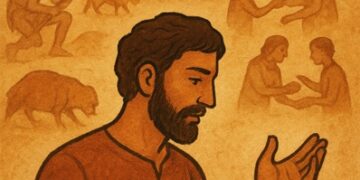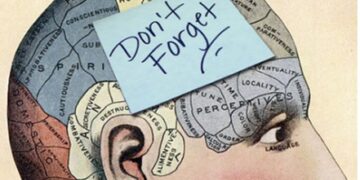Poverty is not merely about income—it is about choices, dignity, and opportunity.
In the picturesque valleys and rugged mountains of Jammu and Kashmir (J&K), the conversation about poverty often takes a backseat to politics, conflict, or infrastructure development. Yet, as policymakers and economists have long argued, no region can hope for peace or progress without addressing the economic deprivation that touches the lives of its most vulnerable.
Drawing inspiration from Martin Ravallion’s landmark book The Economics of Poverty, this article explores how poverty is defined, measured, and addressed—globally and in the specific context of J&K. Ravallion’s work offers not just theory but a call to action: understand poverty deeply, and design policies that genuinely reach the poor.
Poverty in Jammu and Kashmir: A Hidden Crisis
Despite significant public spending and centrally sponsored welfare schemes, Jammu and Kashmir continues to grapple with persistent poverty, especially in rural areas. According to the NITI Aayog’s Multidimensional Poverty Index Report (2021), nearly 12.6% of J&K’s population lives in multidimensional poverty, with deprivations in education, health, and living standards.
The Poonch, Rajouri, and Kupwara districts rank among the poorest in the region, where families often face the combined burdens of geographical isolation, underdeveloped infrastructure, low access to quality education, and inadequate healthcare. This is despite J&K historically performing relatively well on per capita consumption levels, largely due to public sector employment and remittances.
So, how do we explain this paradox?
The Measurement Matters
As Ravallion points out, how we measure poverty affects how we fight it. In J&K, traditional income-based measurements fail to capture the real depth of deprivation. For instance, a family earning just above the poverty line may still lack access to clean drinking water or electricity in hilly areas like Doda or Kishtwar. Likewise, seasonal unemployment among youth in tourism-driven districts like Anantnag or Baramulla rarely shows up in annual household surveys.
The Multidimensional Poverty Index (MPI) is particularly relevant here. It accounts not just for income, but also indicators like child mortality, school attendance, cooking fuel, sanitation, and housing—areas where J&K still lags behind in many remote belts.
The Growth Illusion: Who Is Being Left Behind?
Jammu and Kashmir has witnessed infrastructure growth—roads, railways, mobile connectivity, and digital schemes. Yet, economic growth has not translated into broad-based poverty alleviation. According to recent employment data, J&K has one of the highest youth unemployment rates in India, with many young graduates unable to find stable, meaningful work.
Why does this matter for poverty? Because as Ravallion argues, growth alone isn’t enough—its distribution and inclusiveness are key. In J&K, growth has disproportionately benefitted urban areas like Srinagar and Jammu, while rural and tribal communities remain on the margins.
Moreover, conflict and instability have exacerbated vulnerabilities. Disruptions to education, loss of livelihood during lockdowns (both due to political events and COVID-19), and psychological stress have deepened the poverty trap for thousands.
Welfare Programs: Are They Working?
Schemes like PMAY (housing), Ujjwala Yojana (LPG), MGNREGA (rural employment), and Midday Meals (education and nutrition) operate in J&K, but implementation often suffers from delays, limited awareness, and access barriers—especially for women, the disabled, and tribal communities.
A field study by the Institute of Development Studies (IDS) in South Kashmir highlighted that women in remote villages still rely on firewood, despite being listed under LPG schemes. Similarly, MGNREGA records show allocated work, but wages are delayed or incomplete, forcing rural laborers to seek risky seasonal migration to Punjab or Himachal.
Ravallion reminds us: targeting the poor requires more than slogans—it requires systems that listen, adapt, and deliver. J&K, with its difficult terrain and fragile governance, needs localized solutions, community participation, and robust monitoring systems.
Policy Recommendations for J&K
Based on global evidence and regional experience, five priorities emerge for tackling poverty in Jammu and Kashmir:
- Invest in Human Capital: Education and health spending must reach the last mile. Mobile health clinics, school infrastructure, and teacher accountability in remote districts need urgent attention.
- Strengthen Data Systems: Regular, district-level MPI tracking can help identify “pockets of poverty” and design focused interventions.
- Support Women’s Economic Inclusion: Expand SHG (Self-Help Group) networks, digital literacy, and skill-based training for women, especially in Muslim-majority and tribal areas.
- Promote Local Enterprise: Handicrafts, horticulture, and eco-tourism have enormous poverty-reduction potential. These sectors need access to credit, markets, and digital tools.
- Ensure Transparent Delivery: Leverage technology (DBT, Aadhaar-linked services), but ensure it doesn’t exclude those with low literacy or connectivity issues.
A Valley of Hope—If We Listen Closely
Poverty in J&K is not always visible amidst its scenic landscapes, political headlines, or infrastructure announcements. But it is there—in the skipped meals, the dropped-out children, the elderly without pensions, the anxious unemployed youth.
The real challenge, as Martin Ravallion would argue, is not just reducing poverty numbers on paper—but ensuring that every individual has the chance to lead a life of dignity and opportunity.
For Jammu and Kashmir, that means embracing an economics that listens more closely, reaches more deeply, and acts more decisively.
The writer is an economics educator and development writer based in Kashmir. He writes on policy, education, and equity for regional and national platforms. abbas42@rediffmail.com





